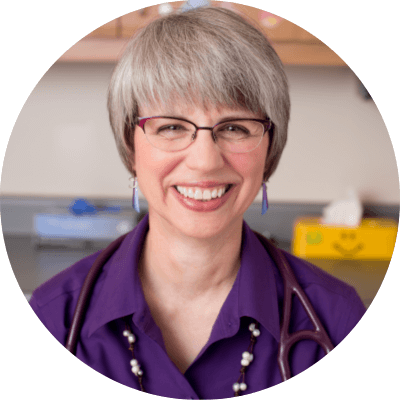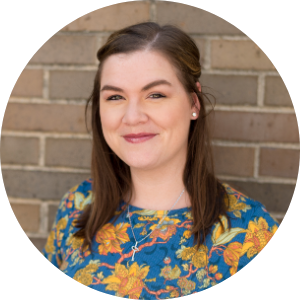THE MULTIDISCIPLINARY CARE TEAM
A multidisciplinary team takes care of the different aspects of a patient’s needs. The care team members may vary from patient to patient.
The following examples are for educational purposes only.
The care team for CHILDREN LIVING WITH SMA could include:
Te care team for CHILDREN LIVING WITH SMA could include:

PAEDIATRIC NEUROLOGIST
Paediatric neurologists are often the first specialists to meet with the parents of children with SMA and will coordinate their overall care.2
Primary concern may include:2
- Diagnosis
- Further evaluation
Common assessments may include:2
- Neurological examination
- Genetic testing and analysis for confirmatory diagnosis
- Assessment of SMN2 gene copy number which can help predict disease severity and prognosis
Short- and long-term management may include:2
- Communicate and coordinate with multidisciplinary care team

PAEDIATRIC PULMONOLOGIST
Paediatric pulmonologists or respiratory therapist work closely with children with spinal muscular atrophy, who may have decreased respiratory function due to issues such as underdeveloped lungs or a weak, ineffective cough.2,3
Primary concern may include:3
- Impaired cough, resulting in poor clearance of airway secretions
- Hypoventilation during sleep
- Chest wall and lung underdevelopment
- Recurrent infections
- Gastroesophageal reflux
Common assessments may include:3
- Pulmonary function (majority of non-sitters may be too weak to test)
- Cough peak flow
- Respiratory muscle strength
- Chest X-ray
- Sleep study
- Swallow function evaluation
Short-term management may include:3
- Chest physiotherapy (CPT)
- Use of BiPAP machine during sleep
- Use of cough assist machine and/or other secretion-clearing machine
Long-term management may include:3
- Tracheostomy

ORTHOPAEDIC SURGEON
Muscular weakness often leads ot orthopaedic issues – especially in children with SMA. This results in skeletal misalignment and difficulty with movement, which may require intervention by an orthopaedic surgeon.2
Primary concern may include:2
- Limited mobility of trunk and extremities
- Contractures
- Spinal deformity
- Limited mobility
- Limited ability to perform activities of daily living (ADLs)
- Increased risk of pain
- Increased risk of osteopenia
- Increased risk of fractures
Common assessments may include:2
- Range of motion
- Strength
- Motor function
- Seating and mobility
- Potential benefit of orthotics
- Radiographs of the spine and other joints
Short-term management may include:2
- Positional support (bracing)
Long-term management may include:2
- Surgery to help correct spinal curvature, etc.

PARENTS/ CAREGIVERS
Parents/caregivers of children with spinal muscular atrophy often become experts in their child’s care and are important members of the multidisciplinary care team.
- They develop a high level of knowledge about the disease and progress of their individual child
- They are highly mobilised, making frequent use of the internet and social media for both medical and social support
- They deliver the majority of the healthcare interventions their children receive on a day-to-day basis, including respiratory support, cough assistance, and nutrition/feeding
The care team for ADULTS LIVING WITH SMA could include:
The care team for ADULTS LIVING WITH SMA could include:

PHYSIOTHERAPIST PHYSICAL THERAPIST
Exercise, stretching, positioning and the use of orthotics and other rehabilitative equipment may be recommended. These decisions are based primarily on the functional status of the patient.2,3
Primary concern may include:2
- Contracture of muscles can cause discomfort and pain, as well as decreased mobility and independence
Common assessments may include:2
- Evaluation of range of motion, muscle strength and mobility.
Tests include:- - Goniometry, manual muscle testing, or myometry
- - Spine and hip radiographs are also consulted
- Evaluation of equipment, assstive technology, and environmental access
Short- and long-term management may include:2
- Range of motion exercises (for contracture)
- Stretching / bracing (for flexibility)
- Fitting of orthotics, splints, or braces
- Leisure, adaptive sport, and play activity
- Exercise (e.g. swimming)
- Weight-bearing time with standing devices

DIETICIAN
Individuals with SMA may have difficulty eating due to weak swallowing muscles and in children, due to poor head control. This places patients at risk of aspiration and/or poor nutrition. These issues may require the guidance of a dietitian with experince in SMA.2
A dietitian may consult with other healthcare providers (e.g. gastroenterologists and surgeons) about short- and long-term management of feeding and pharmacologic issues.
Primary concern may include:2
- Feeding and swallowing problems, potentially resulting in aspiration pneumonia, which can be fatal
- Growth deficit and undernutrition (in children)
- Obesity, which is more common in non-ambulatory patients
Short-term management may include:2
- Nasogastric tubes
- Nasojejunal tubes
Long-term management may include:2
- Gastrostomy tube (G-tube)
- Nutritional support

OCCUPATIONAL THERAPIST
While a physiotherapist can assist with increasing overall mobility through exercise and assistive devices, an occupational therapist helps individuals increase their independence in specific everyday tasks like dressing, bathing, or handling utensils.
They may recommend adaptive equipment or home modifications, such as the installation of ramps or widening of doorways.
Other care team members may include:
![]()
CHILD PSYCHOLOGIST
Child psychologists can provide counselling and guidance on a wide range of psychological and social problems that may arise, including:
- Emotional and developmental problems
- Coping with stresses related to school
- Psychological difficulties for siblings of children with spinal muscular atrophy
![]()
PAEDIATRIC ANAESTHETIST
Paediatric anaesthesiology is another important aspect in the care of children with spinal muscular atrophy who may have to undergo surgery such as tracheostomy or spinal stabilisation. They handle planning of care before, during, and after surgery, as well as delivering anaesthesia.
![]()
PAEDIATRICIAN
A paediatrician is a medical doctor who has been trained to diagnose and treat a broad range of childhood illnesses, from minor health problems to serious diseases.
![]()
NURSE SPECIALIST
A nurse specialist can be an important first-line caregiver given the risk of respiratory illness and works closely with children and families in hospitals. They can provide you with educational materials and connect you with support groups such as SMA Europe to improve your understanding of the disease.
![]()
GENETIC MEDICAL COUNSELLOR
Genetic counsellors can provide information on the consequences and genetic background of spinal muscular atrophy.
They can advise families on the likelihood of developing or transmitting the disease, suggest genetic carrier testing for the parents and other children in the family, and the available options in management and family planning.
For related information on caring for patients with SMA, click below:
The 2017 Consensus Statement for Standard of Care in Spinal Muscular Atrophy provides guidelines for managing common medical concerns in children with SMA.2
Care approaches in Children
Adult-onset spinal muscular atrophy requires evaluation of needs shortly after diagnosis and annual follow-ups to ensure care remains suited to the needs of the patient.2
Care approaches in Adults
Keep an eye out for what is happening in the world of SMA events.
The characters shown are real patients and the required consent to use their stories has been obtained from the patients and families. Photographs are for illustrative purposes only.
References
1. Darras BT, Royden Jones H Jr, Ryan MM, De Vivo DC, eds. Neuromuscular Disorders of Infancy, Childhood, and Adolescence: A Clinician’s Approach. 2nd Ed. London, UK: Elsevier; 2015.
2. Mercuri E,et al. Diagnosis and management of spinal muscular atrophy: Part 1: Recommendations for diagnosis, rehabilitation, orthopedic and nutritional care. Neuromuscl Disord 2018;28(2):103-115.
3. Finkel RS, et al. Diagnosis and management of spinal muscular atrophy: Part 2: Pulmonary and acute care; medications, supplements and immunizations; other organ systems; and ethics. Neuromuscul Disord 2018;28(3):197-207.























